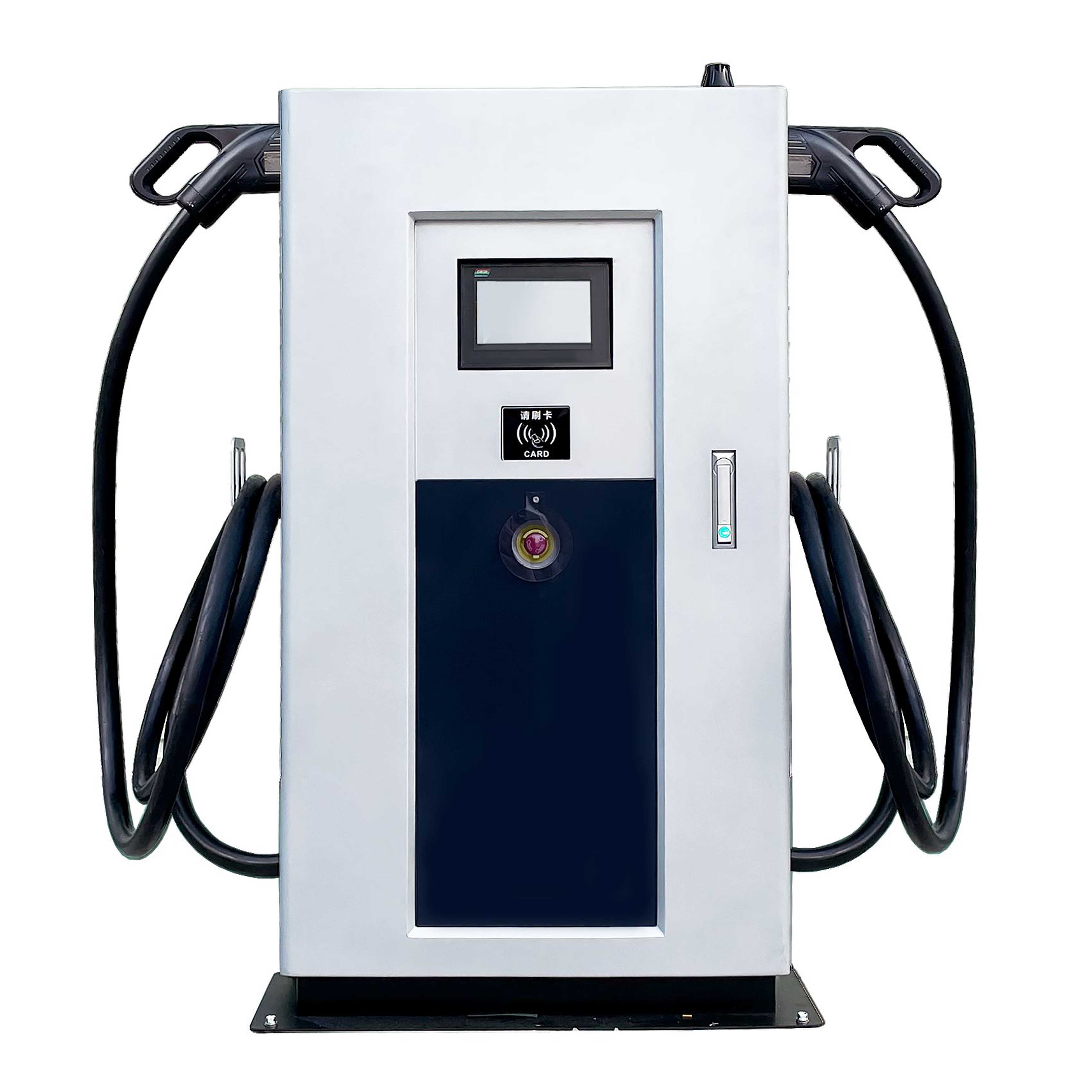
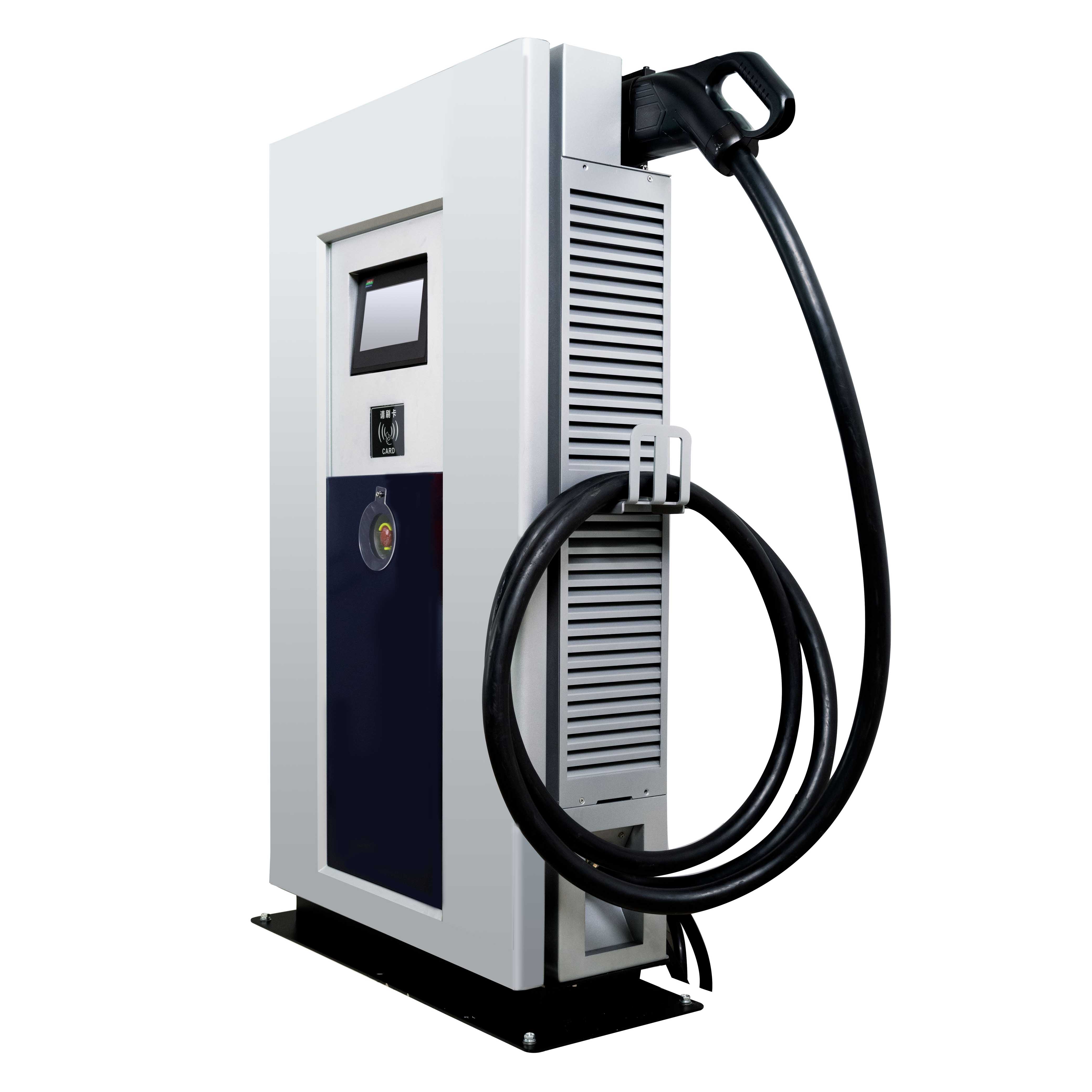
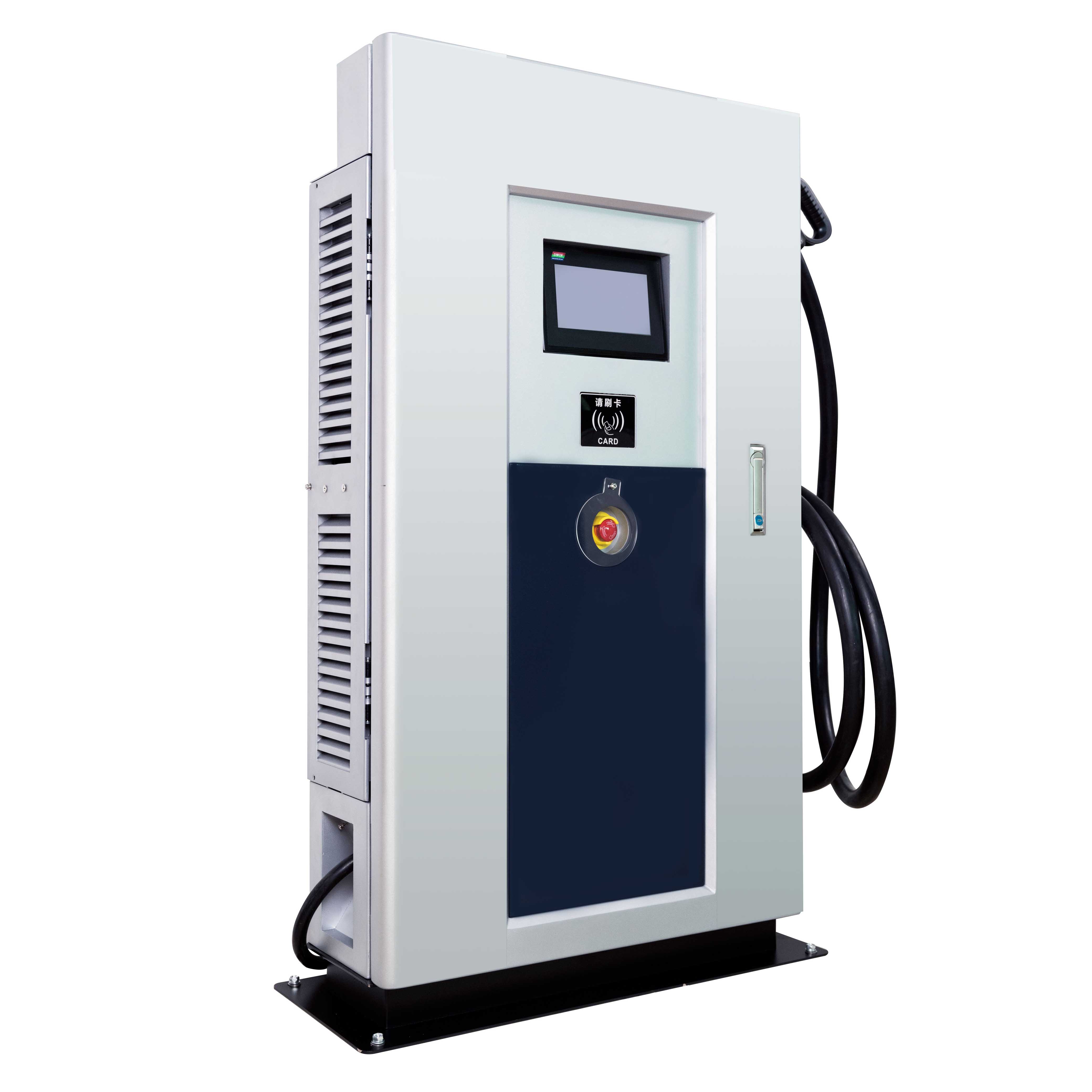
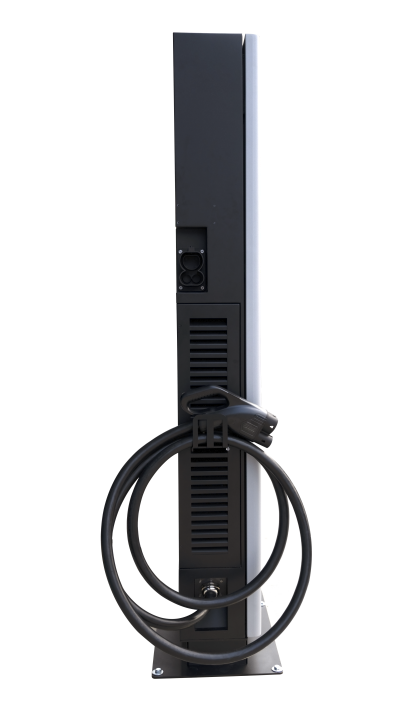
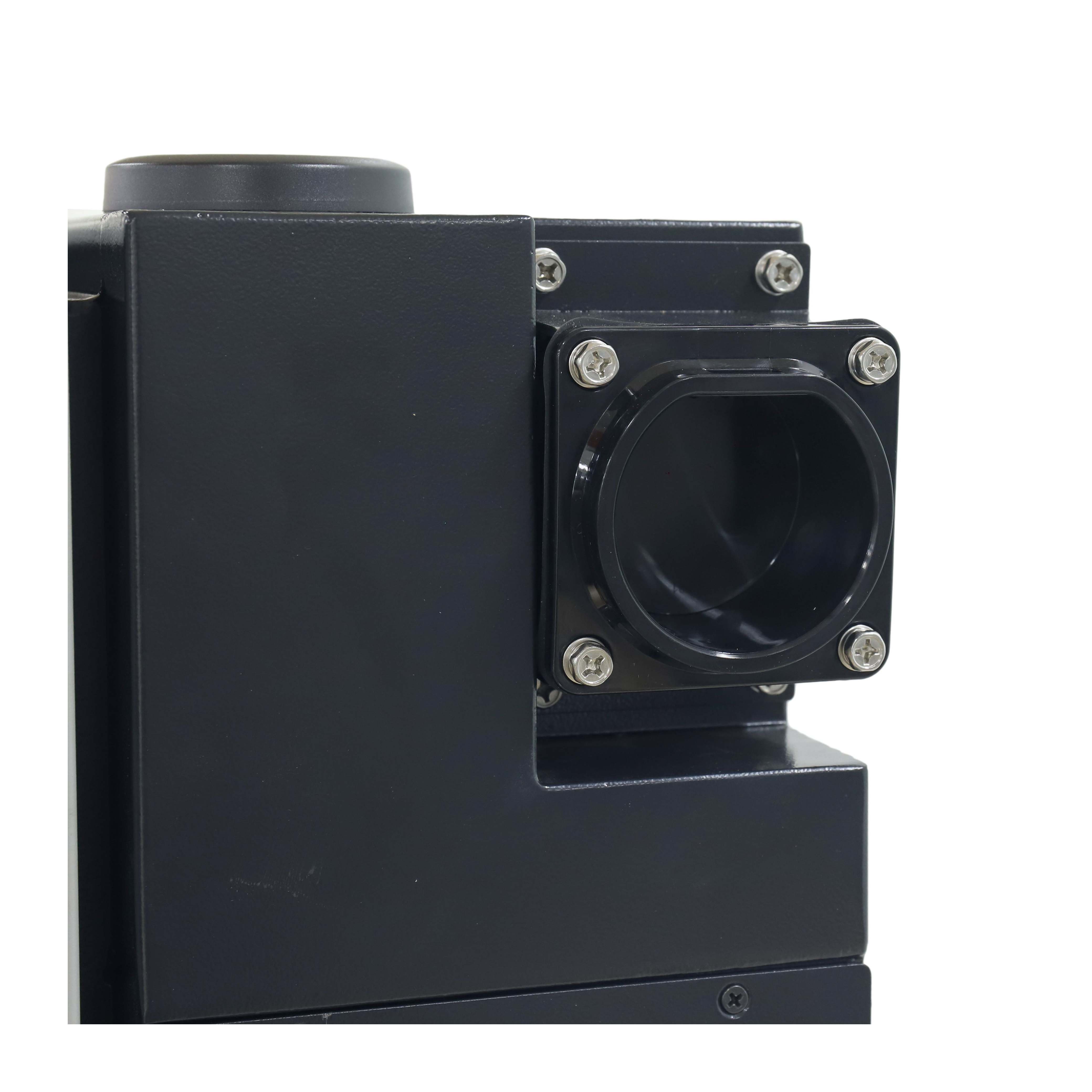

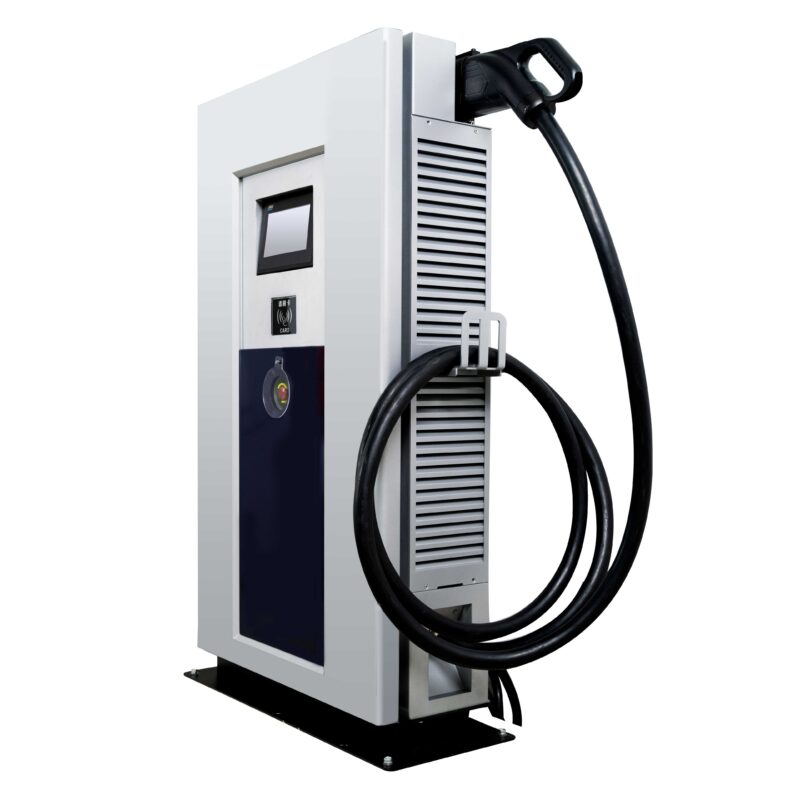
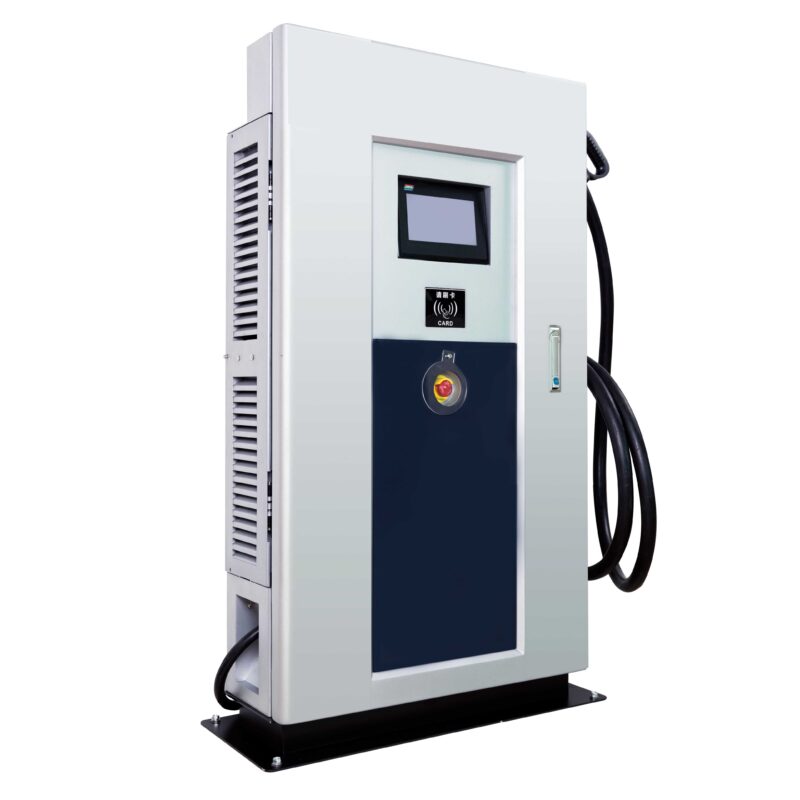

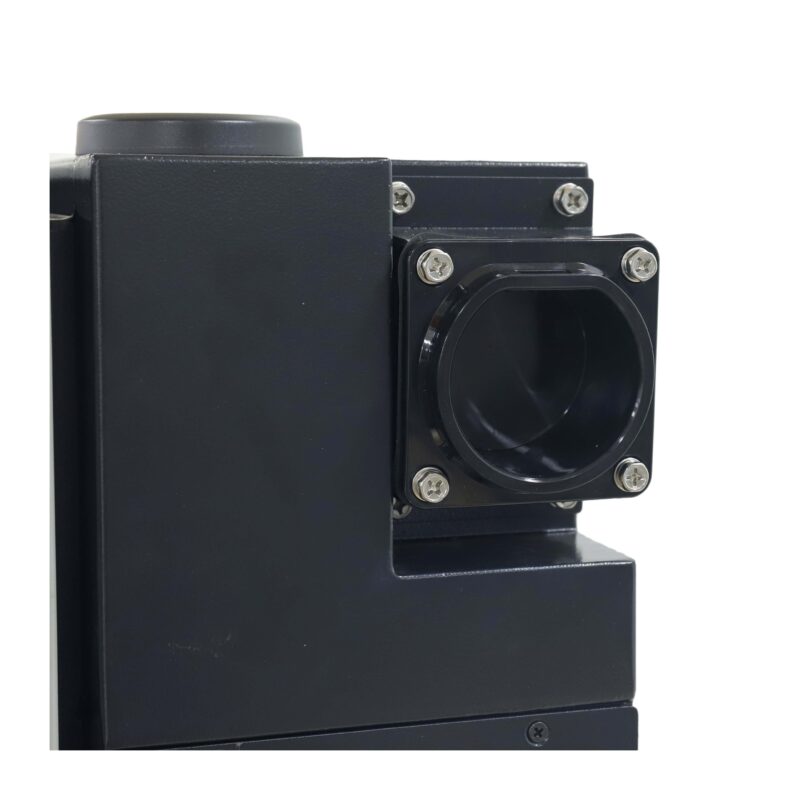
Floor-mounted 1 or 2 gun DC EV charger
The 2 Guns DC charger for electric vehicles delivers powerful and fast charging with outputs ranging from 30kW to 240kW. This state-of-the-art charger is ideal for commercial use. It offers flexible options for charging different types of electric vehicles, ensuring both fast and efficient energy use.
- IP54
- OCPP 1.6
- Full Protection
Charging Power
- Detailed Specifications
- Rated power:60kW-240kW
- Input current:45A-95A
- Gun quantity:2
- Cable length:5M or customized length
- Network connection:Standard configuration:CAN/485/Ethemet Selective:GPRS/4G/WIFI
- Operating temperature:-20C-+50C
- Operation Humidity:5%6-90%RH,non-condensiong
- Input voltage:260V-480V
- Output current:100-200A
- Charging way:Charge alternately/evenly
- AD screen:32 inch advertising screen/wifi
- Size(mm):900X270X1800
- Altitude:2000M
- Standard:Europe standards(CCS):EN61851,EN62196
- Output voltage:200-750V(200-1000V)
- Frequency:45~60 HZ
- Charging mode:Plug and play/RFID/OCPP
- Interface:7" color touch screen+C card contacless card reader
- Weight:250KG
- IP level:IP54
- Protocol:China standards(GB/T):27930;Europe standards(CCS):DlN70121 1S0 15118;Japan standards :Chademo 2.0
Efficiencyimprovement and cost
- Integrate the 32"AD screen with charger,widen your incomes,
Safe and reliable
- Protection grade up to lP54,moisture-proof,water-proof,condensening proof,dust proof and flame retardant.
- With over and under voltage,overload,short circuit,leakage.battery anti-reverse protection,ect.
- IK10 anti-collision
High integration
- The product integrates power conversion, charging control,human-computerinteraction control, communication,and billing system.
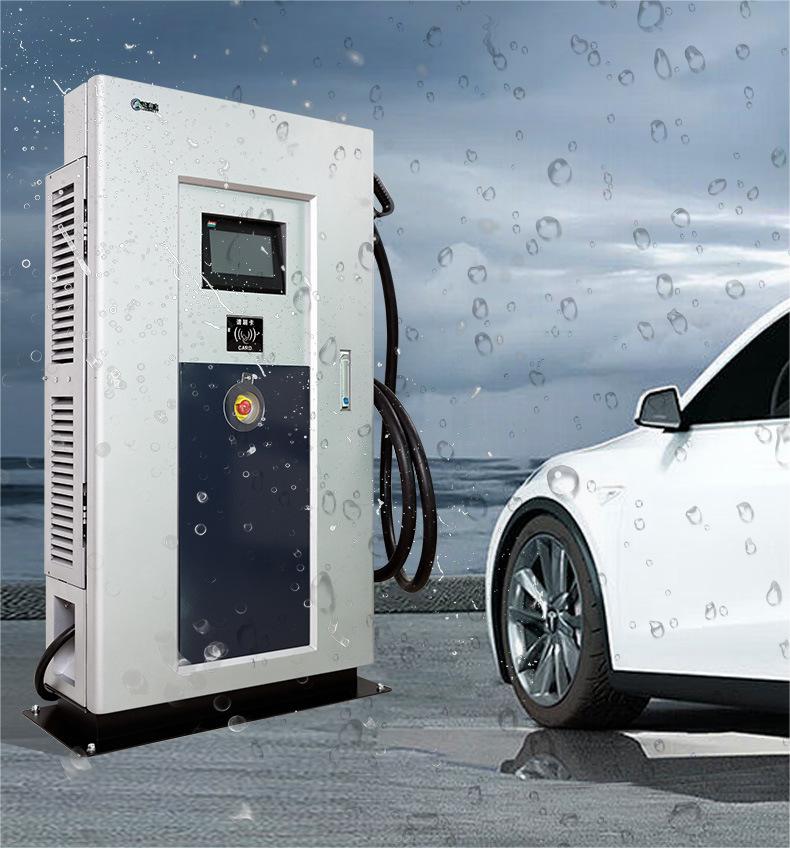
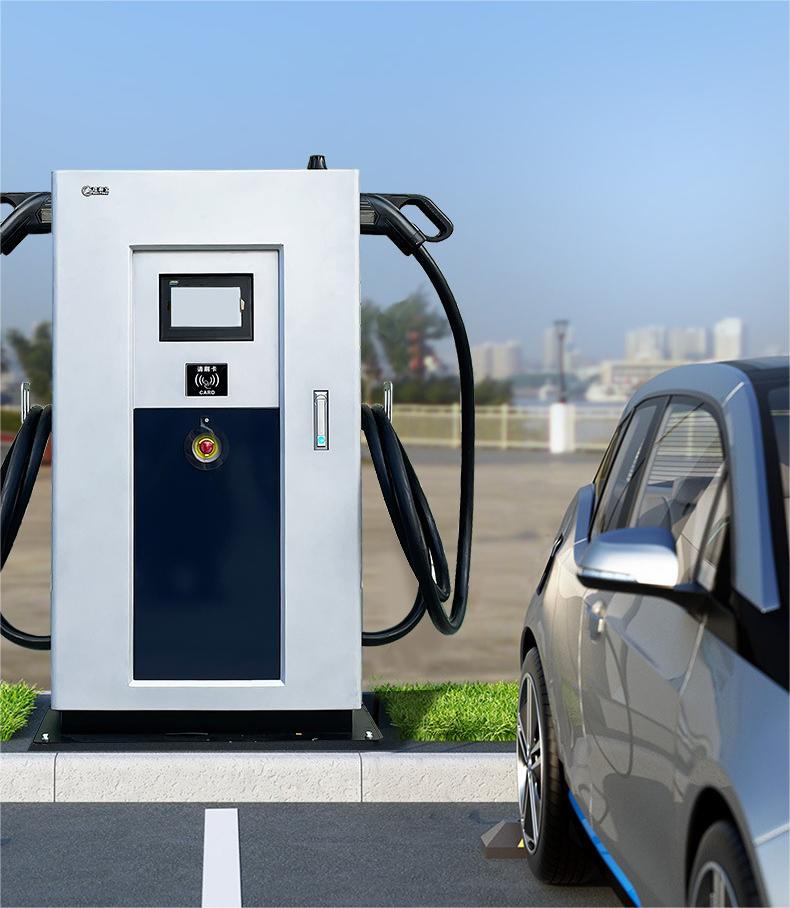
Convenient Connectivity
- This product is equipped with advanced Internet of Things technology, enabling convenient interconnection. During the charging process, the APP can monitor the charging progress, power consumption, and estimated completion time in real - time, and you can also remotely operate to pause or resume charging. In addition, the device supports multi - language display interfaces, facilitating global users. Moreover, it can be seamlessly connected to the smart grid system and automatically adjust the charging power according to the real - time load of the grid, allowing you to fully enjoy the convenience and benefits brought by smart technology.
Custom Powerful Fast Charging
- By meticulously tailoring strong charging performance, we delve deep into the nuances of each customer's operational landscape. We analyze factors such as the type of electric vehicles they use, the peak hours of charging demand, and the space constraints at their charging stations. This in - depth understanding allows us to engineer charging solutions that are not only powerful but also perfectly synchronized with their daily operations.
Remote O&M Service
- We offer an advanced remote operation and maintenance service. Our intelligent monitoring system enables real - time monitoring and remote management of charging equipment. It collects key operating data like charging power, current, and voltage around the clock. When an abnormality occurs, the system instantly alarms and sends fault info to the after - sales team. They quickly diagnose the problem via remote technology and offer solutions. Additionally, we can remotely upgrade the equipment's software. This ensures the equipment always has up - to - date functions and optimized performance, keeping your charging operations smooth.
Explore our wider range of charging products
Our success stories
From homes to commercial spaces, from cities to remote areas, witness how we drive the growth of the EV charging sector with exceptional products and services.
EV Charging Resources
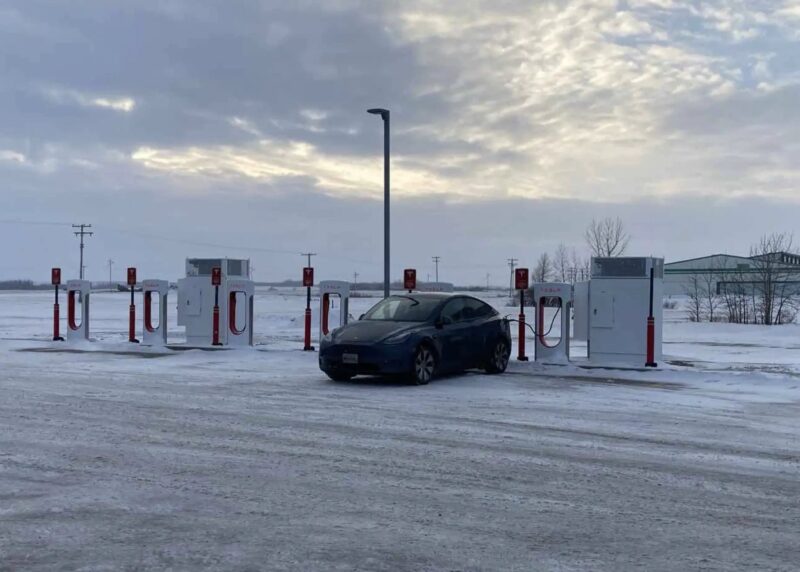
How to Maintain EV Charging Infrastructure in Extreme Climates (-30°C to +50°C)?
Extreme temperatures (-30°C to +50°C) challenge EV charging infrastructure through material degradation, condensation, and efficiency loss. Solutions include silicone cables, UV-resistant housings, active cooling/heating systems, and quarterly maintenance tailored to climate severity. Real-world failures (e.g., northern China’s cold) highlight the need for pre-weather inspections, firmware updates, and sheltered installations. Prioritize adaptable materials and robust thermal management for reliable chargers.
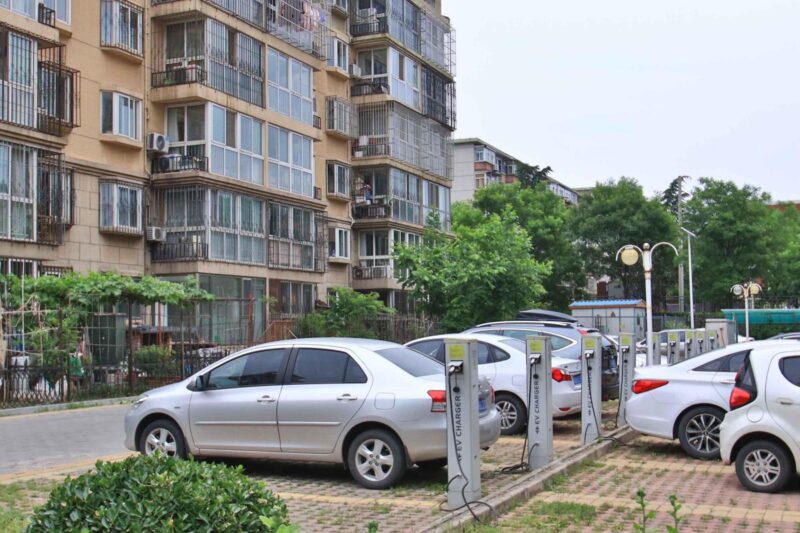
How are Disputes Resolved Over Community-Shared Charging Piles?
Conflicts over shared EV charging often stem from charger hogging, unauthorized use, equipment damage, cost disputes, and accessibility issues. Clear communication with signage, meetings, and updates minimizes misunderstandings. Technology like charging software, RFID access, and apps enables scheduling, billing, and real-time monitoring. Formal dispute processes include mediation, arbitration, or legal action. Fair policies require energy assessments, rules for usage/costs, accessibility compliance, and regular reviews. Transparency in billing and data integration enhances consumer protection, ensuring equitable charging for all residents.

A Comprehensive Analysis of Level 3 Charging Speed: How Fast Can Electric Vehicles Really Charge?
Level 3 charging (DC fast charging) can charge an electric vehicle to 80% in about 30 minutes. The actual speed is affected by the vehicle’s maximum power, battery capacity/temperature/state, charging pole power, and sharing conditions. Understanding and optimizing these factors can maximize charging efficiency and extend battery life. It is recommended to charge to 80% for daily use.
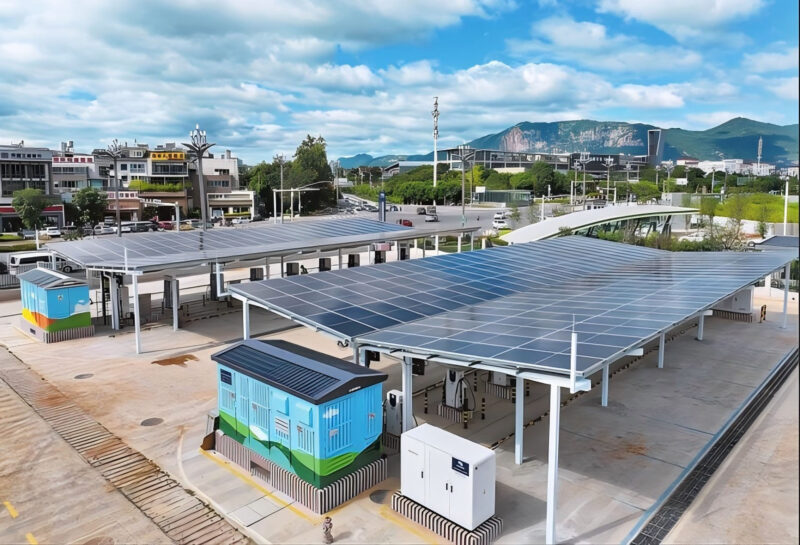
How Can Photovoltaic Storage Charging Stations on Highways Achieve Profitability?
Highway-integrated photovoltaic (PV) storage charging stations achieve profitability by combining charging fees, grid services, government subsidies, and ancillary revenue (e.g., retail, ads). Unlike standard stations, they blend solar power, battery storage, and smart grid interaction to cut costs and boost resilience. Key strategies include optimized energy management, dynamic pricing, V2G technology for grid balancing, and location-based amenities. Initial costs are offset by incentives, while diversified revenue streams and future trends like ultra-fast charging and AI-driven operations ensure long-term viability in the EV ecosystem.
get a tailored OEM solution
- Comprehensive OEM solutions
- Safe and reliable chargers
- Cost-effective options
- Suitable for all types of businesses
